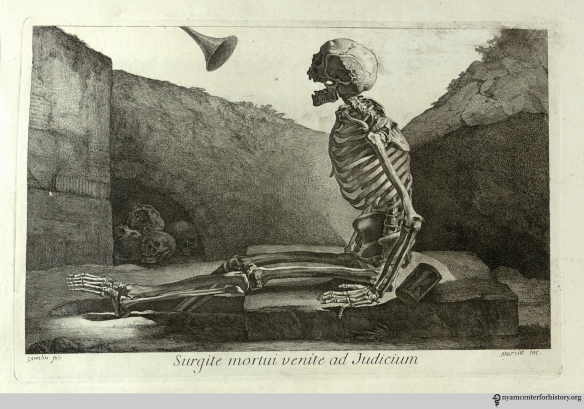By Anne Garner, Curator, Rare Books and Manuscripts

Jacques Gamelin. Nouveau recueil d’osteologie. “Surgite mortui, et venite ad judicium (Arise, ye dead, and come to the judgment).” Table 6. Click to enlarge.
One of the greatest pleasures of the vast library collections of the New York Academy of Medicine lies in browsing our fascinating treasury of anatomical atlases and smaller format illustrations of the human body. From early attempts by anatomists like Dryander and Hundt, who depicted the body diagrammatically, to the Baroque and fantastic skeletons of the French anatomist Jacques Gamelin, almost two hundred fifty years later, these illustrations are not only visually transfixing, but offer tantalizing visual evidence of the progress made in understanding and depicting the way the body works. Chief among these milestone illustrations stands the monumental work of Vesalius, whose skeletons and muscle men changed the way the human body was drawn forever in 1543.
In this slide show hosted by Flavorwire, we’ve assembled some of our favorite images by pioneering anatomical illustrators. In honor of Halloween, we’re highlighting skeletons with a gleam in their eyes, a scowl on their faces, and a spring in their step, for optimal thrills and chills.

Pingback: Whewell’s Gazette: Vol: #20 | Whewell's Ghost